Azores
The Blue Island of the Azores
Faial is one of the 9 islands of the Azores, a Portuguese archipelago of volcanic origin located in the North Atlantic between Europe and America.
The Azores are now considered one of the best nature destinations in the world. The diversity of its landscapes, the richness of its biodiversity and the intense contrasts between the 9 islands are what set this archipelago apart.
The climate is temperate, with average temperatures ranging between 13ºC in winter and 24ºC in summer. The Gulf Stream crosses the archipelago and keeps the sea temperature at between 17ºC and 23ºC. The air is humid with
an average relative humidity of about 75%.
Recognizing the importance of moving towards a more sustainable development model, the Azores has implemented policies and projects aimed at protecting and preserving the region’s multitude of natural, historical and cultural resources.
In 2019, the Azores became the first archipelago in the world to achieve international certification as a sustainable destination by an entity accredited by the Global Sustainable Tourism Council.


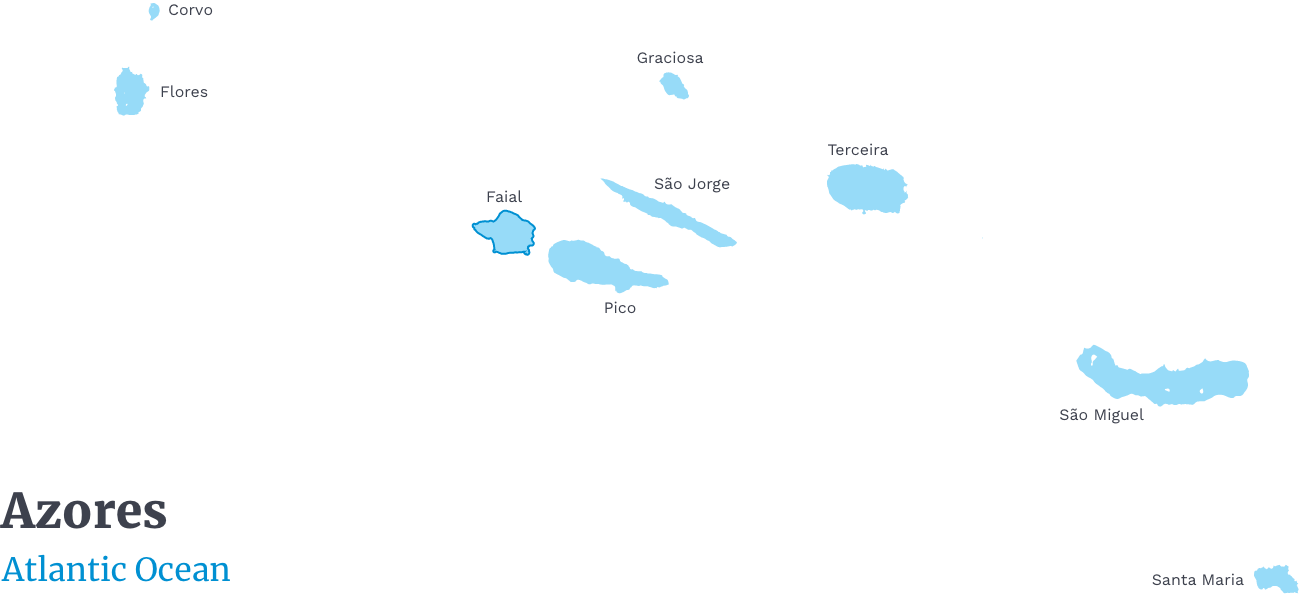
Faial Island
Faial Island is the 4th largest island in the Archipelago. It is 21km long and 14km wide (173.42km2), which corresponds to 7% of the total landmass of the Azores, and has the 3rd largest population, with approximately 15,000 inhabitants (2011 census).
The island is formed by a line of mountains that crosses from east to west dotted by numerous volcanic peaks. The largest of these is Caldeira, a giant crater that is 2,000m across by 400m deep, the result of intense eruptions that greatly contributed to the formation of the island as it exists today.
At the western tip of the island stands the Capelinhos Volcano that began to erupt in 1957 and ended in 1958. Just a little more than 60 years ago, this eruption deeply marked the island and its effects are still visible today.
In addition to the unique landscape that it created (the erosion has been studied by NASA in several expeditions and contributed to the creation of erosion models for the surface of Mars), the eruption of the volcano, on the edge of the island, was a defining moment in the emigration of the local people to the United States, which reduced the population of the island by almost half.
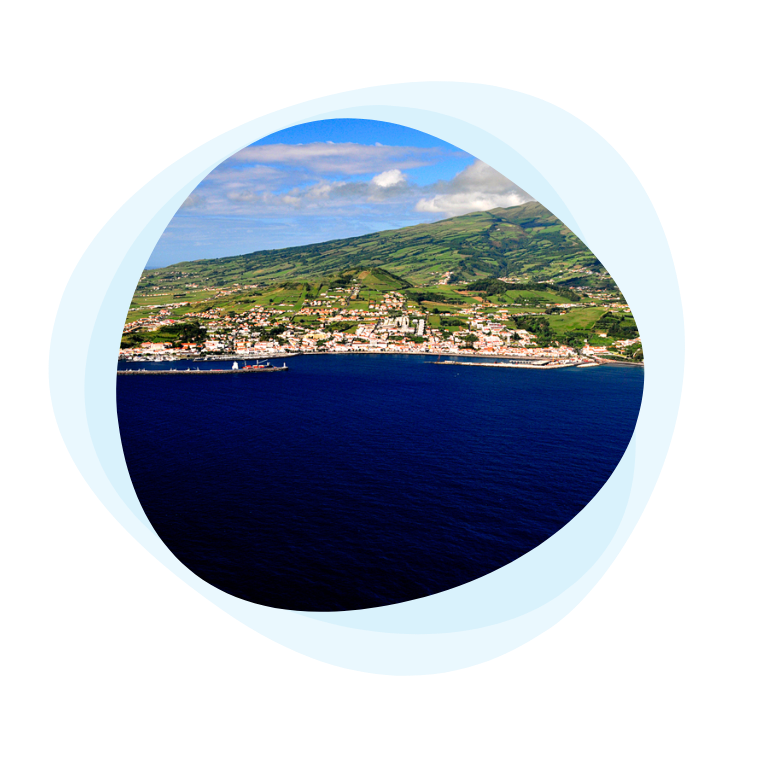
The highlands of the island are marked by hills and extensive areas of pasture and forest, which create striking landscapes with an intense palette of greens. The coast is characterized by a great variety of geographical formations, from slopes dominated by cliffs to protected bays, natural pools, and several black sand beaches.
Horta, the only city in the Triangle, is known as the “Sea City”, with a history connected to navigation, international trade, telecommunications, aviation, and whaling dating back 600 years.
Ever since it was settled, Horta has been a place where peoples and cultures from different parts of the world have met and interacted. Its marina is one of the busiest in the world, welcoming more than 1,200 vessels on their journeys across the Atlantic every year. First started centuries ago, calling into the port of Horta is still a mandatory ritual today for sailors from all over the world.
This connection to the sea and to the outside world is reinforced by the work of many other entities. One such example is the Department of Oceanography and Fisheries, a branch of the University of the Azores, based in Faial, which brings together researchers of various nationalities who are dedicated to the study of the oceans and cutting-edge science.
The relationship with the sea, which stems from Horta’s long tradition as a port city, continues to be one of the island’s great traits. Rather than a separating factor, the sea has always brought Faial closer to the world.
Today, the island is still recognized for the harmonious way it combines the best of nature on land and sea with this feeling of closeness to the rest of the world––a feeling that stems from sharing, a sense of curiosity, and generosity.
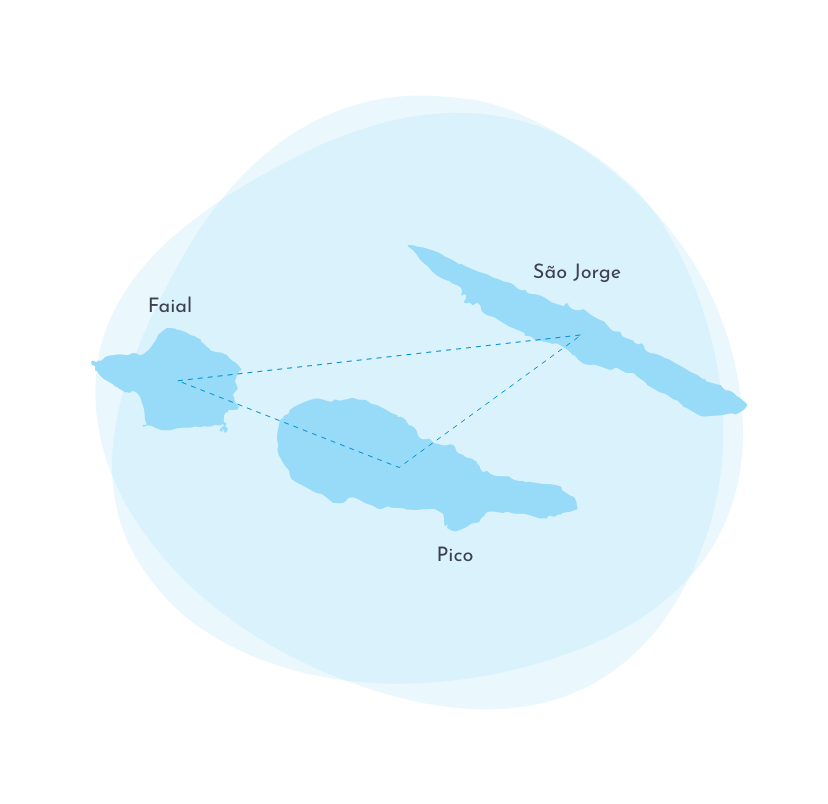
The Azores Triangle
Faial is one of the three islands commonly referred as the Azores Triangle, a region in the entire archipelago where the landscape and cultural contrasts are most evident.
The islands of the Triangle – Faial, Pico, and São Jorge – so named for their geographical and historical proximity, are three very distinct islands, whose natural attributes, such as geological age, size, shape, or relief, have fostered very different paths of social, cultural, and economic development.
The three islands have regular maritime connections all year round.
Faial and Pico are the closest together, being only 5 nautical miles from each other (approximately 8km). A ferry trip between Faial and Pico takes just 30 minutes, and there are several daily connections throughout the year.
A ferry trip between Faial and São Jorge takes 2 hours and has daily connections during the summer and every other day during winter.

Faial: a cosmopolitan island from birth
Although it is a small island in the middle of the Atlantic, the history of Faial is interlinked with some of the world’s greatest historic events. With one of the safest and most important ports in the Azores, Faial was involved in Portugal’s maritime expansion, the maritime trade with Asia, Africa, and the Americas, American long-distance whaling, submarine telegraph communications, and aviation.
This connection with the rest of the world began as soon as the island was settled in 1468 under the provincial commander Josse Van Huertere, originally from Flanders. These first settlements, in the areas of Porto Pim and Conceição, gave birth to the town of Horta, which was founded around 1500. Today, various surnames derived from the original Flemish settlers still survive, such as Dutra (a Portuguese adaptation of van der Hurtere), Terra (van Aaard or Aertrycke) or Brum (van der Bruyn).
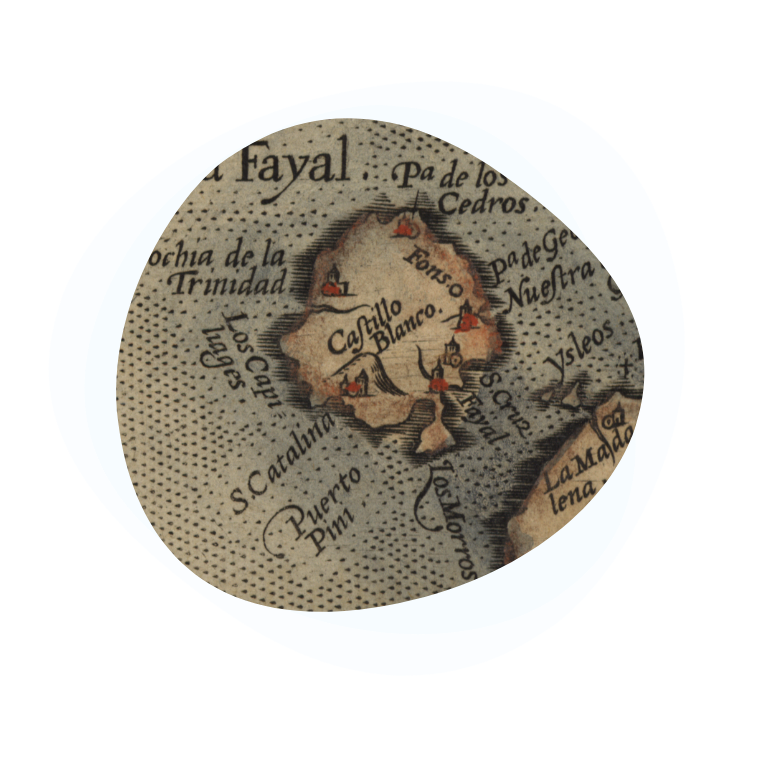
Detail of the Faial Island - Map of the Azores (1584) - Ortelius Abrahamd
During the 20 th century, with the modernization of ships and the end of whaling, the Port of Horta waned in commercial importance, but it has always found new opportunities to take advantage of, such as the presence of Dutch tugboats, the growth in aviation, and, more recently, the rise of recreational boating and yachting.
In 1971, Horta Airport was inaugurated, which leveraged a new level of development. In 1974, with the April revolution, there was the transition to democracy. In 1976, the Azores achieved the status of Autonomous Region and gained its own government, with sovereign functions in several areas.
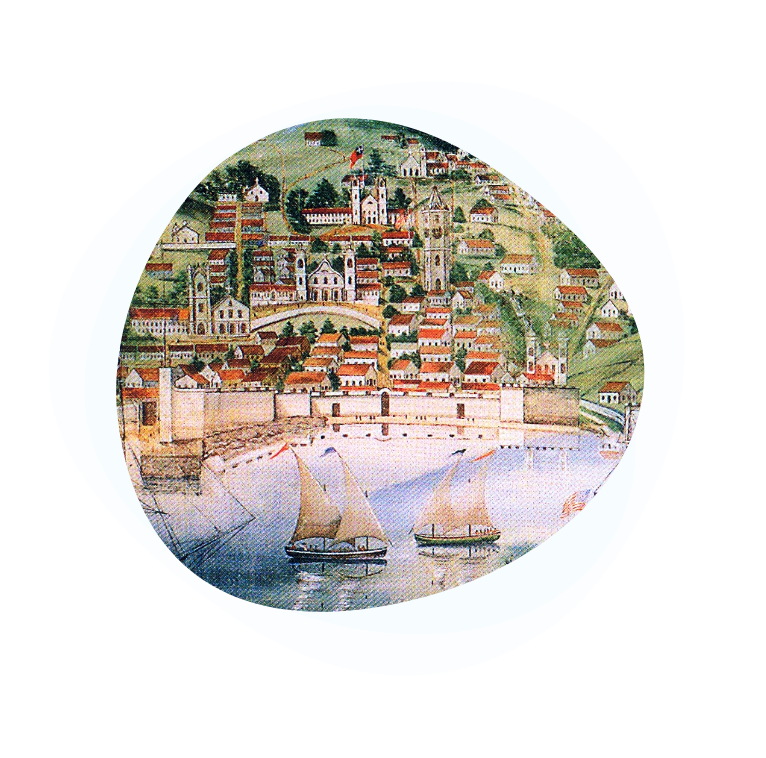
Detail of the port of Horta - Great Panorama of a Whaling Trip around the World (1842) - Purrington-Russell
The 17th century, a time of economic growth, was marked by the architectural development of the city. Numerous convents and churches, manor houses, middle-class houses, and warehouses sprang up. Faial became a port of call for ships sailing from the West Indies to England and from Brazil and the East to Portugal. This intense movement of merchant ships led many foreign traders and consular representatives to settle on the island.
The 18th century brought new commercial opportunities that further increased the importance of the Port of Horta: the exporting of wine (essentially produced in Pico) to Central and North America and the emergence and growth of the whaling industry. Whaling had a major cultural and economic impact on the islands. Its main objective was the extraction of whale oil, which had numerous applications but was mostly used in public lighting in the United States and in Europe.
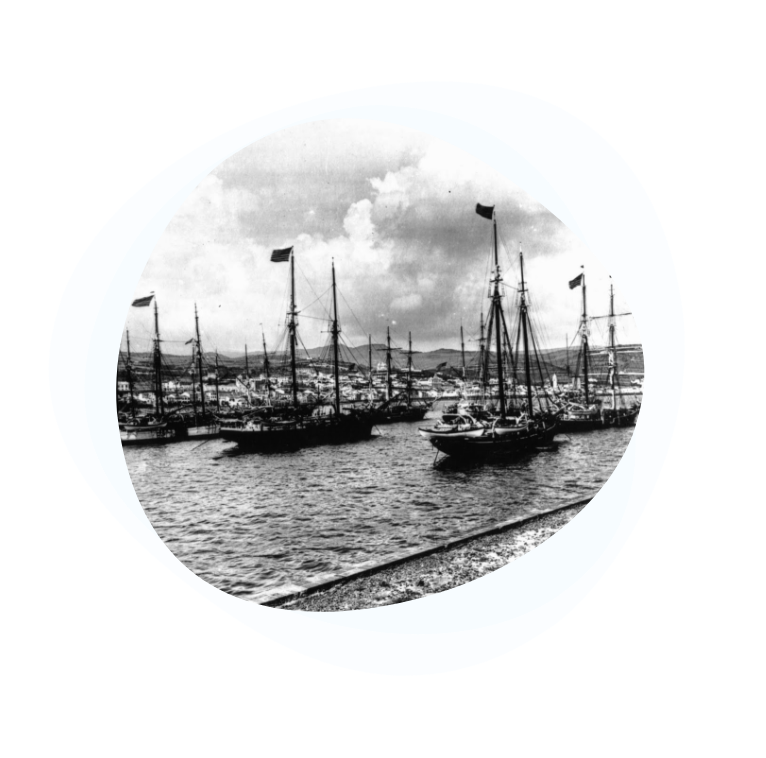
American whaleboats in the port of Horta (1900) - Foto Jovial
As early as the beginning of the 19th century, the Dabney family settled in Faial. This American family who came to the island for commercial purposes––exports, whaling, and wine––played a very important role in Horta’s economic, political, social, and cultural life.
Did you know? In 1790, John Street was appointed Vice Consul of the United States in Faial. On 7 July 1795 he was named Consul, thus creating the American Consulate in the Azores, which remained in Horta until 1917. Today, it is the oldest American Consulate in the world.
During the 19th century, due to its busy port, the city of Horta affirmed its eclectic and cosmopolitan identity. It became a place known for importing not just habits and customs but architecture, furniture, fashion, decoration, music, and the arts. During this time, the island was visited by several illustrious figures, such as the painter William Morris Hunt and the banker J.P. Morgan.
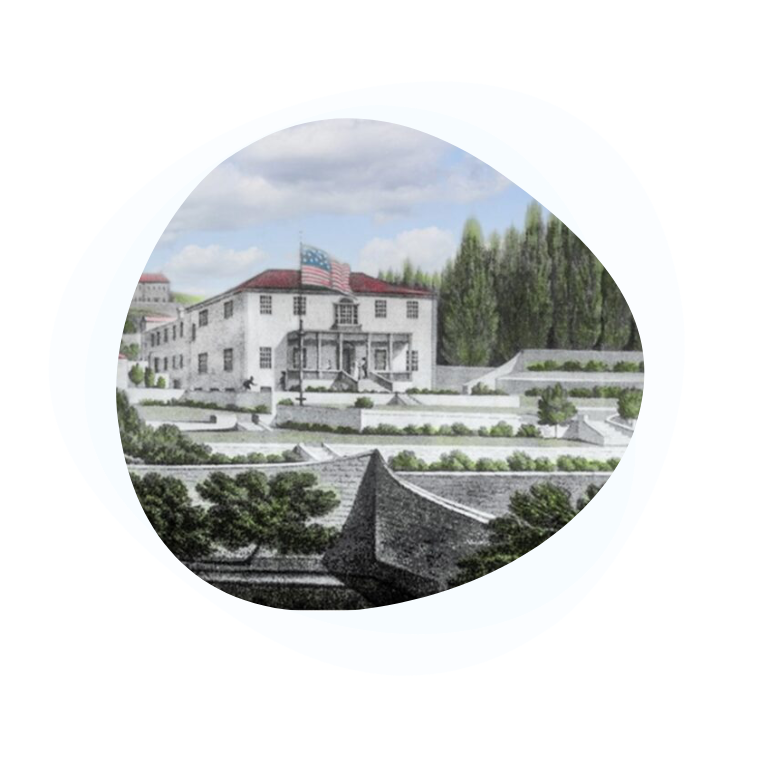
Bagatelle - Dabney Family (19th century) - Collection and colorization by JM Medina Garcia
In 1893, the first submarine communications cable was laid between Horta and Carcavelos on Portugal’s mainland. Later, other cables were laid that connected the city to Africa, America, England, France, Germany, Spain, Cape Verde, and Lisbon.
These undertakings, carried out by telecommunication companies from several countries (the most important of which were England, the United States, and Germany), placed the city of Horta at the center of the international telecommunications map.
This period lasted until the end of the 1960s and was marked by a great process of urban, cultural, and sporting development primarily fed by the permanent contact with foreign communities. The construction of buildings increased, roads were built to connect the countryside and the city, a public lighting network appeared, and the paving of the main streets and the construction of sidewalks was promoted. Musical groups, musical bands, and philharmonic groups were also formed and sports clubs were established (such as Fayal Sport, one of the oldest in the country), for the practice of tennis, soccer, water polo, baseball, and croquet.
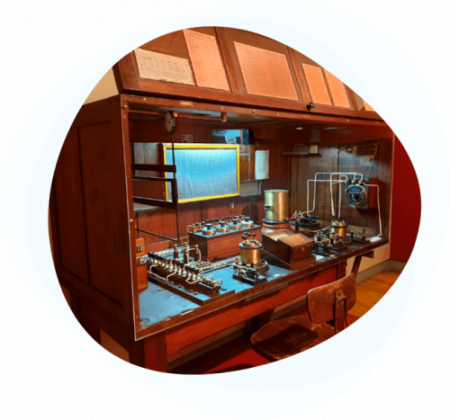
On 17 May 1919, Captain Albert C. Read landed his NC4 hydroplane in Horta Bay. He had just completed the first leg of the first flight across the North Atlantic, connecting Trepassey, in the United States, to Plymouth in England.
After this inaugural flight, Horta Bay became a regular stopover for seaplanes connecting Europe to North America. This period was also marked by the habitual presence of the Clippers, Pan American Airways’ seaplanes, which in 1939 inaugurated a regular route connecting the two sides of the Atlantic.
In 1957-58, the Capelinhos Volcano erupted, an event that left a deep mark on the island, causing a wave of emigration to the United States that took half the population of Faial with it. Besides the local consequences, this eruption became a global scientific and media event. The magnitude of the event, coupled with the fact that the eruption took place near the coast of the island, meant the eruption cycle could be monitored and unprecedented scientific studies carried out.
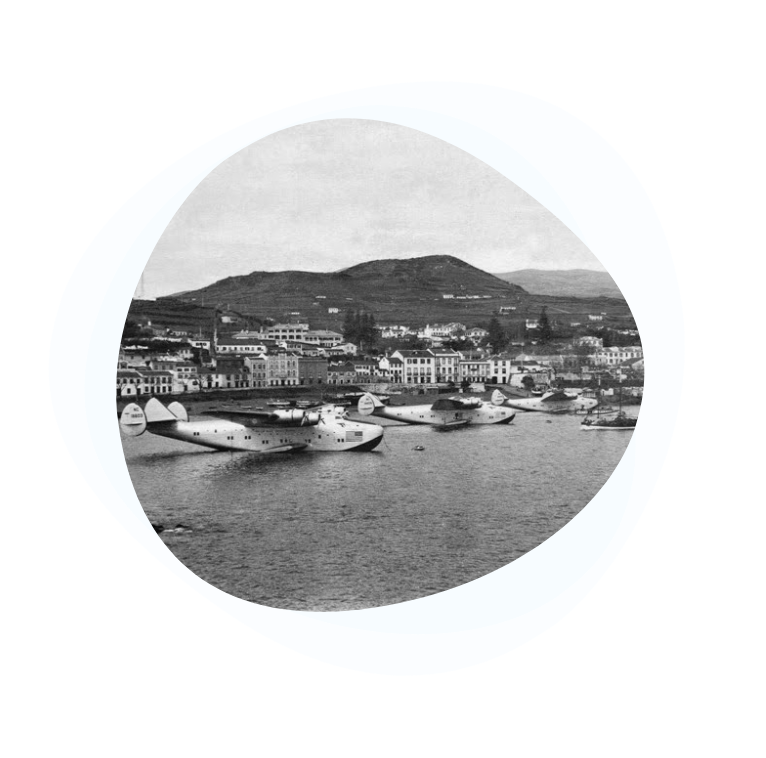
PanAm seaplanes at the port of Horta (1939) - Jovial Photo
During the 20 th century, with the modernization of ships and the end of whaling, the Port of Horta waned in commercial importance, but it has always found new opportunities to take advantage of, such as the presence of Dutch tugboats, the growth in aviation, and, more recently, the rise of recreational boating and yachting.
In 1971, Horta Airport was inaugurated, which leveraged a new level of development. In 1974, with the April revolution, there was the transition to democracy. In 1976, the Azores achieved the status of Autonomous Region and gained its own government, with sovereign functions in several areas.
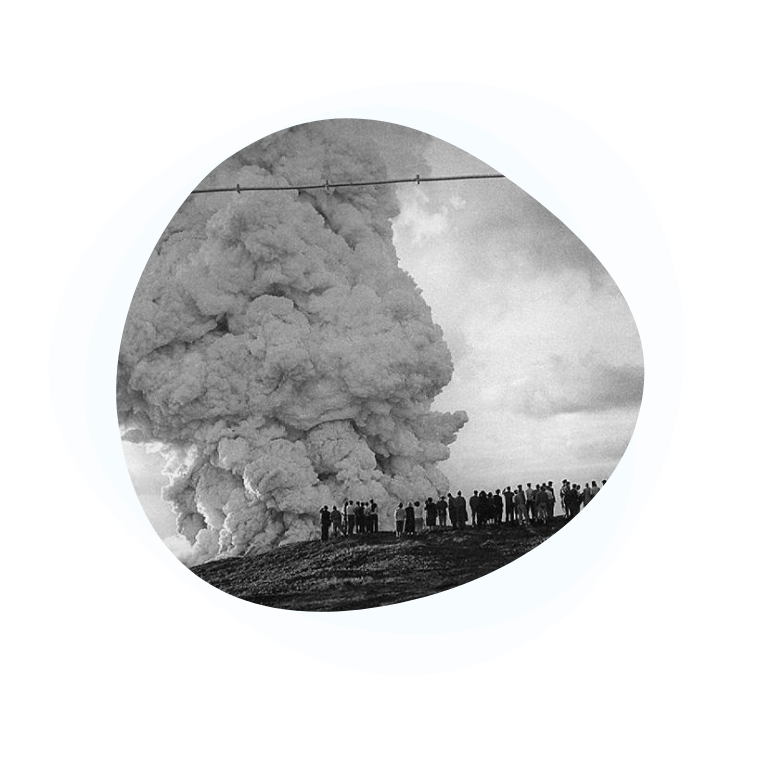
Capelinhos Volcano (1957) - Foto Jovial

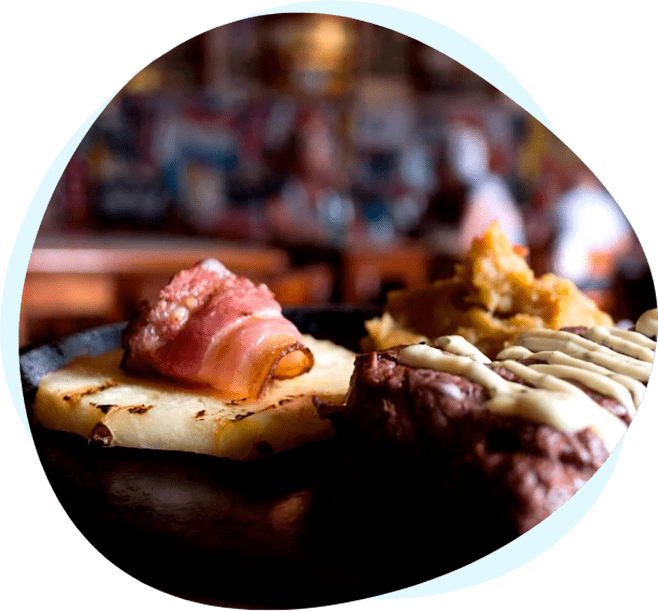
Faial Gastronomy
The basis of the Azorean cuisine is Portuguese, but it is also the product of its available resources and the strategic importance of the archipelago, which fostered cultural and commercial exchange.
What most distinguishes Azorean cuisine from others is the way of cooking and the seasonings used. Meat and fish flavored with cinnamon and Jamaican pepper, very sugary sweets, lots of cookies to take on board, and traditional English and American fruit cakes are examples of these influences. Azorean cuisine is a fusion of foods from Portugal and the Tropics.
The specialties of Faial are fish, shellfish such as limpets, beef and pork, sausages, black pudding, yams, sweet potatoes, sub-tropical fruits, jams, cookies, fruit cake, massa sovada (sweet bread), corn bread, wines, and liqueurs. These latter, mostly produced in Pico, are a direct result of the close connection that has always existed between Faial, Pico, and its people.
Annual Events
Dia dos Amigos (Male Friends’ Day), Dia das Amigas (Female Friends’ Day), Dia dos Compadres (Godfathers’ Day) and Dia das Comadres (Godmothers’ Day).
A tradition that goes back nearly 100 years, when people used to gather on Thursdays to celebrate the Holy Spirit, recite poetry, and sing songs about friendship. Nowadays, on every Thursday in the four weeks prior to Carnival a celebration is held for one of 4 groups: male friends, female friends, godfathers, and godmothers.
Whalers' Great Route Ultra-Trail® by Azores Trail Run®
A trail running and ultra-running event with races between 10k and 118k along the trails of Faial Island. It usually takes place in May.
MUMA Festival
A music festival that promotes exchanges between local artists with others from various parts of the country. Takes place in May.
Divino Espírito Santo
The festivities to honor the Holy Spirit begin on Pentecost Sunday and last for several weeks. It is the most significant devotion of the Azorean people and is characterized by popular celebrations organized by lay brotherhoods.
Maravilha Festival
A cultural street festival that takes place every 2 years in July/August.
Regattas
Several international regattas either start or end at Horta Marina. Most noteworthy of these is Les Sables – Les Açores – Les Sables for Class 40 boats and Class Mini Transat 6.50. Les Sables Horta Les Sables is a regatta that departs from Les Sables d’Olonne in France for Horta before returning to Les Sables for the 2nd leg. It usually takes place in July.
Sea Week
One of the largest nautical festivals in the country, combines nautical activities and competitions with cultural presentations and gastronomic offerings. It usually occurs in July/August
Popular Summer Festivals
During the summer, each parish organizes popular festivals with traditional gastronomy, music, culture, and folklore.
SOS Cagarros (SOS shearwaters)
Between 1 October and 15 November, this activity rescues juvenile shearwaters that have left their nests for the sea on their first transatlantic flight. Often disturbed by the lights on land, they end up at the side of the road and at risk of losing their lives. If you’re on Faial during this period, find out about the campaign and help save the shearwaters!
Triangle Adventure by Azores Trail Run®
A Trail Running event in three stages – 3 days, 3 trails and 3 islands: Faial, São Jorge, and Pico. The event is organized by Azores Trail Run® and usually takes place in October.
Dia das Montras (Storefront Day)
This Christmas event takes place on December 8 and is the day on which traditional shops present their Christmas window displays. The city’s Christmas lights are turned on and a Christmas fair held with handcrafted products, typical foods and drinks, musical concerts, and church services.
Parque Aberto
A program with various recreational and educational activities that take place throughout the year in the Natural Parks of the Azores.



